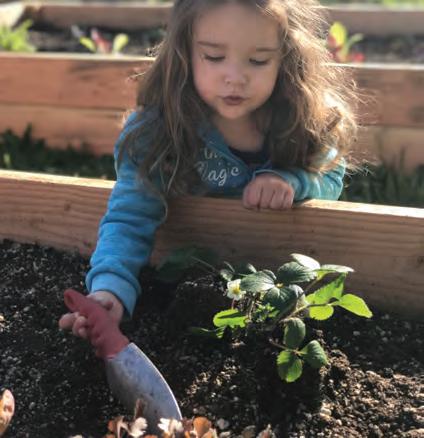
2 minute read
STRATEGIC PRIORITY #2
Strategic Goal
Invest in Lane County residents by fostering engaged communities with affordable housing options, equitable opportunities, economic vitality and a healthy environment.
Objectives
A Increase housing affordability, diversity and supply serving Lane County’s residents in order to address the housing crisis.
1) Implement the Affordable Housing Action Plan.
2) Align housing objectives with all economic, climate, preparedness, and recovery plans.
3) Convene financial collaborations to expand innovative and equitable resource opportunities.
4) Leverage educational institutions (Lane ESD, LCC and UO) to expand skills sets in the construction trades workforce and expand apprenticeship programs to fortify design-build opportunities.
5) Support rural communities by piloting community land trusts and limited- equity cooperatives.
6) Lead faith community housing project, convene a team of faith leaders to identify pilot projects, identify funding opportunities, and conduct pilots.
B Focus on the intersection of economic development, equity and the environment as we look to achieve a viable, fair and livable community
1) Implement economic strategies including business retention and expansion, business recruitment, workforce support (living wages, upward mobility, next-gen training), entrepreneurship growth and capital access.
2) Enhance and expand the community benefits program.
3) Implement pilot program with capital building projects to inform countywide procurement policy that aligns with Climate Action Plan and equity goals.
4) Enhance and standardize data collection to inform and advance our equity work as an organization in order to provide equitable services to the community.
5) Operationalize the use of our strategic lenses (stewardship of resources, equity and collective impact).
6) Implement and operationalize the Climate Action Plan and complete Phase 3 of the community-wide resiliency plan.
7) Fully vet the construction of a waste processing facility for the Short Mountain Landfill.
8) Implement strategies from the Parks Funding Task Force to provide sustainable funding for parks.
C Evaluate a multi-use community facility with the Eugene Emeralds baseball team as an anchor tenant that provides economic benefits and services to the broader community.
1) Conduct a comprehensive financial analysis and explore best practices.
2) Initiate a community engagement plan.
D Build our relationships with community groups to proactively expand opportunities for equitable and inclusive civic engagement.
1) Create inclusive multi-modal approaches so that events and activities allow community members to engage in ways that feel meaningful and result in greater connection to their community and fellow residents.

E Focus and support rural communities by enhancing outreach, sharing consistent information and effectively planning to best meet their needs.

1) Support and invest in our “Rural Connections” group, a cross departmental group that focuses on sharing information and strategizing as it relates to rural communities.
2) Enhance engagement by making it easier for rural residents to participate in processes and to be informed of services and plans that impact them.
F Invest in the Land Management Division to ensure adequate and sustainable staffing levels and resources are available to be responsive and agile in meeting current and future housing needs and customer service expectations.
1) Invest in new technologies such as an online permit submittal and customer service portal to enhance permit review efficiencies.
2) Identify stable, ongoing funding to support adequate staffing without the use of reserves or one-time funds.
Draft Performance Measures
• Housing Opportunity Index Percentage (measure the number of new and existing homes which were affordable to families earning the area medium input and divide that number by the total number of homes using income and sales prices)
• X% reduction in households paying greater than 30 percent of household income on housing
• Reduce internal operations fossil fuel use by 5% annually (compared to 2019 use) to achieve a 50% reduction by 2030
• By 2025, reach 63% waste recovery







